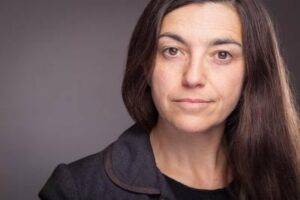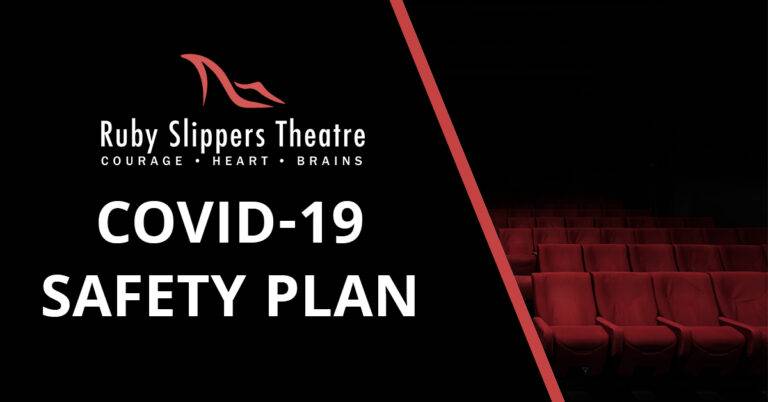Sitting in a Chinatown café, I’m sharing coffee with a young theatre maker. We talk a bit about our projects, but mostly we’re here to share information about something very far from, yet deeply impacting, our theatrical practices. We’re both booked for surgery (with the same surgeon, even) to treat endometriosis. We’re trading information, stories, concerns, strategies – and it is such a relief. I’ve had a few conversations and Facebook threads with theatre friends who also have the condition, but this is the first time I’ve spent a whole coffee chat in free-form mutual curiosity and support.
I’ve resisted writing about endometriosis, though my social media feed is peppered with informative links. Many of us in the theatre world live with health conditions that impact our practices – multiple sclerosis, fibromyalgia, anxiety, arthritis, cancer, there’s an endless list. Some of these health conditions we’re born with, some are acquired; some are short-lived, some are life-long; some are progressive, some are curable. When our way of being butts up against the constraints of the social and built environment, those constraints create disability. Our theatre excludes many artists living with visible and invisible disabilities because of the way we’ve constructed our theatre. At PTC, we’re working towards an inclusive theatre practice that can recognize and shift barriers that are disabling to artists.
I’ve benefited from some of the inclusive practice we’ve adopted. Inclusive designers call it “broader beneficial impact” – like curb cuts for wheelchair users benefitting people with strollers, bikes, or grocery carts. An example – PTC has instituted what we call “relaxed workshop protocol,” which essentially means everyone in the room is entrusted to look after their needs during the session. If you need to move around, you do; if you need to lie down, you do. If you need a break for five minutes every hour, we all do that together. When we start a workshop, people are asked in advanced about their time and space needs, so change is built into the foundation. Starting work at 11 am? Much better for an artist living with fibromyalgia, with a broader beneficial impact for a parent delivering kids to school. Once we’re in the room, we try to bring a responsiveness and flexibility to how things will proceed. At the root is a mutual trust that everyone is making choices that bring their best work to the fore.
This principle is at play in different degrees in some rehearsal rooms already. But it’s not a standard practice, and when it’s not, if you can’t do what you need without feeling like you’re asking too much… well, many artists will sacrifice their mental or physical health rather than rock the boat. We need to change our root assumptions about how we’re going to make the work if we want to have an inclusive theatre. How do we inspire those of us in the theatre community who haven’t yet dealt with life-impacting conditions or events to think about how to make change? It’s a process, and it’s a group activity.
People who have made it through the stage door who have impairments or conditions that we can manage within current constraints – we’re the privileged ones. There’s much more radical work to do, but as I’ve learned, I will start where I am, and pick something to work on. We’ve stated with our relaxed workshop protocol. I’ve learned to do a better job of managing my condition at work from artists with a lived experience of disability. They have provided me with visible strategies, and modeled ways of talking about preferences and needs. How many Vancouver theatre artists need these tools of inclusion to do their best work? What do we lose when artists can’t begin to participate, or leave the theatre because our assumptions leave no space for their contribution?
We’re sipping coffee – mine decaf. I don’t drink alcohol or caffeine, and my friend is on a low FODMAP diet to help with endo’s digestive impacts. I know at least seven other women in my immediate theatrical circle who have endometriosis. We each have some sort of personal science project on the go – a new supplement, a diet change, an exercise or meditation to try to manage, to keep up our very active lives. It’s estimated that 10% of women are affected. The best guess is that I have it too. But I won’t be sure until I have laparoscopic surgery sometime this spring – that’s the only way to diagnose endometriosis. You can read about endometriosis symptoms here, but the basics are pain, fatigue, sometimes excessive bleeding, and digestive disorders. For some, the pain has been compared to appendicitis or childbirth. It carries an increased risk of ovarian cancer and heart disease. Conventional treatments include hormones, painkillers, and surgery. It subsides for most people at menopause (though not for everyone), or temporarily with pregnancy. Management can include heat, acupuncture, diet changes, exercise, pelvic floor therapy, and other chronic pain management strategies. Surgery, where the endometriosis is excised completely, can provide relief, but can also result in scarring that causes pain, and recurrence ranges from 15-30% depending on the skill of the surgeon and the pervasiveness of the tissue. I began seeking treatment seven years ago, though my symptoms began 20 years ago. The average time for diagnosis of the disease (i.e. confirmation through surgery) is 7-10 years.
Chronic and acute pain is harder for freelance artists. They have to decide whether and how to disclose, without losing this gig (or one in the future). It’s also harder for freelancers to pay for complementary care (acupuncture, massage, special diets, supplements) that can make pain and other symptoms (including drug side effects) more manageable. And of course, it’s harder to make ends meet with reduced work hours that can result from time lost to pain, medical appointments, and frequent rest. Then there’s the stigma that any perceived weakness can convey in the theatre milieu – perceptions of being less reliable, less energetic, somehow less than other theatre makers.
I’m in an easier position than my friend. As the leader of a company, people may raise an eyebrow, but they mostly don’t remark if I traipse into a meeting with a heating pad. I can check in with my PTC team from home when I’m debilitated and can’t be at work. After a major collapse in 2010, I have taken a lie-down-before-you-fall-down approach. My experience has been less acute than some of my friends’, possibly because I have access to the complementary care that takes the edge off.
Back to that coffee date in Chinatown. After we compared symptoms, management strategies, and medical system experiences, I asked my young friend if there was anything that would make it easier for her to do her work while living with endo. We both had a big sigh at that question. For her, especially as a performer: “I wish we could just have a check in at the beginning of every rehearsal so I can share what I’m dealing with – and then I’ll deal with it. Pretending I’m not in pain makes it worse.”
My friend didn’t identify access to care as the most meaningful change. The main thing she wants is the opportunity to acknowledge her experience with her colleagues. She may be acting, but she doesn’t want to pretend. This change is one that is within everyone’s grasp, but it’s a particular responsibility of producers and directors. You can ask what people need without forcing them to disclose why they need it. Part of checking in and acknowledging where we’re at is being able to support each other without taking on each other’s pain. I don’t want people to be wrinkling their brow, or talking to me in hushed voices asking “Are you okay?” I do want them to not take it personally when I take a nap at break instead of joining everyone on a social jaunt.
There are many ways we need to change our working conditions in theatre that are more urgent than improving working conditions for artists with endometriosis. It’s tempting to point out all the easy ways to make change – the ones that don’t cause discomfort, that aren’t inconvenient, that don’t cost any money. That may be a place to start, but small adjustments are not going to achieve inclusion. Where are the d/Deaf artists on Vancouver stages? What about all the back stages that aren’t wheelchair accessible? There’s a larger conversation going on about these issues. We can participate. We can change together. Our theatre will be richer for it.
Acknowledgements/Resources:
PTC’s inclusion process has been led by Jan Derbyshire, and influenced by all the artists living with a disability who have collaborated on processes with us.
Social Model of Disability and Inclusive Design:
Endometriosis:
https://www.endocenter.org/is-life-long-pain-a-given/
Catherine Frazee on the myth of robustness:
https://www.thestar.com/opinion/commentary/

Photo credit: Matt Reznick
Bio
Heidi Taylor is a Vancouver-based dramaturg, director and performer. She has been Artistic and Executive Director at PTC since 2012. Her practice includes sited, devised, and interdisciplinary work, often developing performances from first idea through to production. Recent productions include Quelemia Sparrow’s O’wet/Lost Lagoon, co-produced by Alley Theatre and Full Circle First Nations Performance, Kendra Fanconi’s Tinkers, produced by The Only Animal, and at the Cultch, am a, with Amber Funk Barton and Mindy Parfitt. Heidi also collaborates with VACT on the MSG Lab, and is dramaturg on Tetsuro Shigematsu’s next piece, One Hour Photo.

